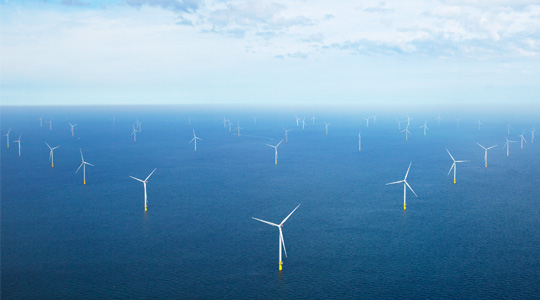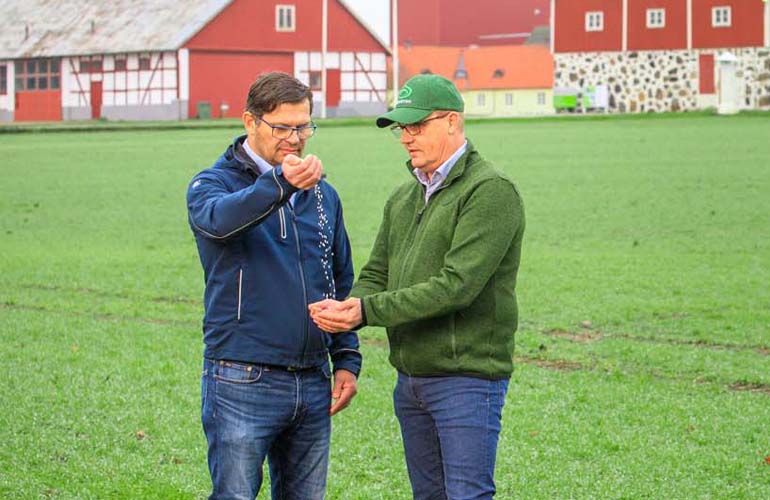What is Fit for 55?
The Fit for 55 Package, presented by the European Commission in July 2021, encompasses a series of legislative initiatives across various sectors, ranging from energy to transport.
Yara welcomes the ambitions of the package and believes that rising carbon prices are a critical enabler for greater competitiveness of low-carbon technologies. Government support will make a difference in supporting first movers and helping scale up and accelerate the transition.
How to make Fit for 55 work to achieve climate neutrality in the EU and at the global level
We see opportunities to improve the legislative proposals in some specific areas, which would accelerate the transition, enhance the competitiveness for European low-carbon solutions on the global market and make the legislative package more coherent.
EU Emissions Trading System (EU ETS)
Reforms driving up the carbon cost are welcomed, as long as they are delivered responsibly
Carbon Border Adjustment Mechanism
CBAM, currently only designed for imports, must address export competitiveness as well
Renewable Energy Directive (REDIII)
REDIII needs to focus on the core driver of renewable energy use in industry: availability & cost
FuelEU Maritime Initiative
Provide stronger incentives for zero-carbon fuels compared to transition technologies
LULUCF
New rules for the land sector should promote low -emission farming and forestry
Yara’s vision on a functioning CBAM - sending a strong carbon price signal to reduce global emissions
A competitive playing field
CBAM is needed to ensure a competitive playing field in the internal market between European producers and importers because today producers outside the European Economic Area face a very limited carbon cost on their emissions.
Rising carbon prices and a stable framework
Carbon prices must continue to rise to drive the transformation of production and value chains and create space for low-carbon technologies. Reforms of the EU ETS are therefore welcomed, if they are implemented gradually to avoid undermining investor confidence.
CBAM within the global market
For Yara, due to the seasonality of agriculture, operating large-scale production infrastructure on a continuous basis depends on the ability to serve markets in both the Northern and Southern hemispheres. This is needed to drive efficiency of production operations, thus reducing operating costs and reducing energy consumption and emissions.
An export solution is crucial
The current CBAM design only levels the playing field for imports. There must also be a solution for EU/EEA low carbon solution products to be exported in global markets, thus preventing carbon leakage at the global level. In reality, a loss of competitiveness in the EU/EEA exports would entail more products with a higher carbon footprint, which would unavoidably lead to increased GHG emissions globally.
Yara is a front runner industry striving for the decarbonization of the agri-food and energy value chains

Yara continues to work actively to reduce the carbon footprint of fertilizers, both during production and when used in the field. We’ve already reduced our greenhouse gas emissions[1] globally by about 45% since 2005 and in Europe by about 55%.
Our goal is to reduce our global emissions by a total of around 60% by 2030 and become climate neutral by 2050. Thanks to a catalyst technology developed by Yara that is commercially available for the rest of the industry, Yara has been able to reduce nitrous oxide (N2O) emissions from fertilizer production by more than 90 per cent.[2]
We are also constantly innovating to optimize the use of our products in the field to reduce their climate and nature impact. We use our deep knowledge of soil health, plant nutrition and agriculture to optimize food production while reducing agricultural emissions and maximizing the carbon storage potential of soils.[3]
We recently established Yara Clean Ammonia to capture growth opportunities in emission-free fuel for shipping and power, fossil-free food production and ammonia for industrial applications.
[1] Scope 1: direct GHG emissions; Scope 2: indirect emissions from purchased electricity
[2] Yara ESG Investor Seminar 2020 (pdf, 3.4 MB)
[3] Yara’s roadmap for putting Europe’s Farm to Fork Strategy into action (pdf, 1 MB)
Learn about Yara’s pioneering decarbonization projects
Green ammonia in Norway
Yara officially takes the first step towards full decarbonisation of the ammonia plant at Herøya in Porsgrunn.
Learn more
Green ammonia in The Netherlands
We joined forces with Ørsted to develop a pioneering project aimed at replacing fossil hydrogen in the production of ammonia.
Learn more
Fossil free fertilizers
Yara and Lantmännen are the first companies to sign a commercial agreement to bring fossil free fertilizers to market.
Learn moreZero emission vessel
Yara Birkeland will be the world’s first fully electric and autonomous container vessel with zero emissions.
Learn more






















































